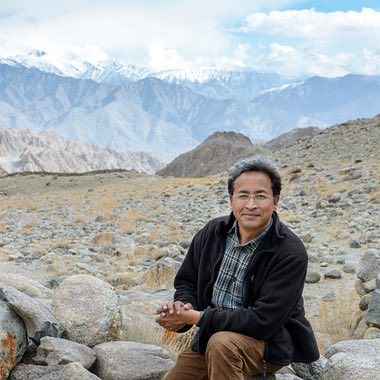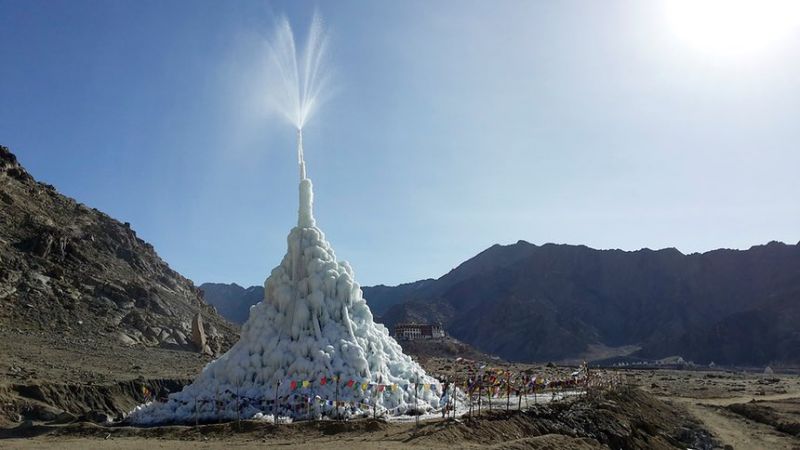Solving Water Crisis in the High Desert of Himalaya
Published on by Water Network Research, Official research team of The Water Network in Technology
An idea to build artificial glaciers at lower altitudes using pipes, gravity and night temperatures could transform an arid landscape into an oasis.
Unnaturally high global temperatures threaten ice shelves everywhere – but researchers believe Himalayan glaciers are shrinking more quickly than any on earth. Less water is reaching Ladakh’s farms and villages, and when it does, the volume of water from the faster-melting glaciers can break the banks of streams, causing floods.
Sonam Wangchuk came to the idea of creating artificial glaciers in the Himalayas at lower altitudes.

Wangchuck Sonam won the 2016 Rolex Award for Enterprise.
Photograph: Stefan Walter/Rolex Awards
“The problem was that it couldn’t be done in lower altitudes, where people actually live,” says Wangchuk. The lakes were also restricted to heavily shaded areas, and simply melted too quickly to make up for the shortfall in water wrought by increasing temperatures. Adapting the concept became Wangchuck’s obsession. The auspicious chunk of ice on the bridge showed him how that could be done.
“The ice needed to be shaded – but how?” he says. “We couldn’t have it under a bridge, or use reflectors, which aren’t practical at scale. So we thought of this conical shape: making ice shade itself.”

Image: How the ice pyramids or artificial glaciers work: gravity pressure forces water up through a pipe to form ice stupas that store water for the crop growing season. Photograph: Sonam Wangchuk/Rolex Awards
It was a kind of biomimicry: artificial innovation based on natural phenomena, such as velcro – modelled on the way plant burrs attach to dogs, or new skin grafts that stick to bodies by piercing the tissue and expanding, the same way parasitic worms fix to the intestines of their hosts.
The conical shape hit a sweet spot, maximising the volume of ice that can be “grown”, while minimising the surface area exposed to direct sunlight. That means it keeps melting well into the spring, releasing up to 5,000 litres of water each day by “storing it in the sky”, Wangchuk says.
It also has the benefit of resembling the Buddhist stupas – religious sites used for meditation and worship – that dot the landscape, a crucial point for 50-year-old. “Because it resembles something we have in our tradition, it is made more close to the population, to their hearts,” he says.
Synchronising his work with nature and tradition are key to the inventor’s practice. “Generally I like things to be simple and self-acting,” he says. “For me, simplicity is beauty, simplicity is the ultimate satisfaction.”
And the stupas are simple. They are formed by running pipes below the frost line, at which temperature the water hovers between a liquid and solid state. Then the pipes turn skywards, spraying the water into -20C air, using the bitter cold to freeze it as it falls to earth.
The first prototype, stretching 20 feet high, was built in October 2013, and expected to melt by the beginning of May. It lasted eighteen days longer. A second much larger stupa was grown near a forest of 5,000 trees, and kept them watered throughout the driest months until 6 July.
Those two stupas were funded by crowdsourcing donations. Last year, Wangchuk was awarded a Rolex innovation grant, money he will use to create the next generation of ice towers. 20 more, each 100 feet high, are in the works.
Media
Taxonomy
- Water Scarcity In Desert area
- Glacier
- Glaciers